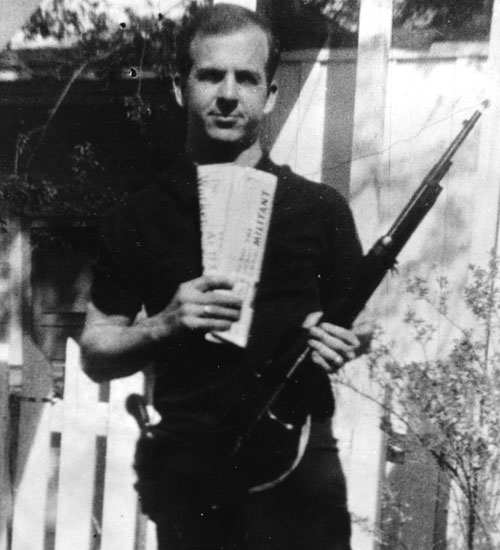Oswald and various conspiracy theorists claimed that the incriminating photo was a fake, stating the lighting and shadows were inconsistent, but after analyzing the photo with modern-day forensic tools, Farid says the photo almost certainly was not altered.
Experts long ago said that this image had not been tampered with, but a surprising number of skeptics still assert that there was a conspiracy.

Lee Harvey Oswald in his backyard with a rifle and communist paper "The Militant" in 1963. Credit: NARA / President John F. Kennedy Assassination Records Collection
"If we had found evidence of photo tampering, then it would have suggested a broader plot to kill JFK," said Farid, who is also the director of the Neukom Institute for Computational Science at Dartmouth. "Those who believe that there was a broader conspiracy can no longer point to this photo as possible evidence."
Farid and his team have developed a number of digital forensic tools used to determine whether digital photos have been manipulated, and his research is often used by law enforcement officials and in legal proceedings. The tools can measure statistical inconsistencies in the underlying image pixels, improbable lighting and shadow, physically impossible perspective distortion, and other artifacts introduced by photo manipulators. The play of light and shadow was fundamental in the Oswald photo analysis.
"The human brain, while remarkable in many aspects, also has its weaknesses," says Farid. "The visual system can be quite inept at making judgments regarding 3-D geometry, lighting, and shadows."
At a casual glance, the lighting and shadows in the Oswald photo appear to many to be incongruous with the outdoor lighting. To determine if this was the case, Farid constructed a 3-D model of Oswald's head and portions of the backyard scene, from which he was able to determine that a single light source, the sun, could explain all of the shadows in the photo.
"It is highly improbable that anyone could have created such a perfect forgery with the technology available in 1963," said Farid. With no evidence of tampering, he concluded that the incriminating photo was authentic.
"As our digital forensic tools become more sophisticated, we increasingly have the ability to apply them to historic photos in an attempt to resolve some long-standing mysteries," said Farid.
The study will appear in a forthcoming issue of the journal Perception.






Comments